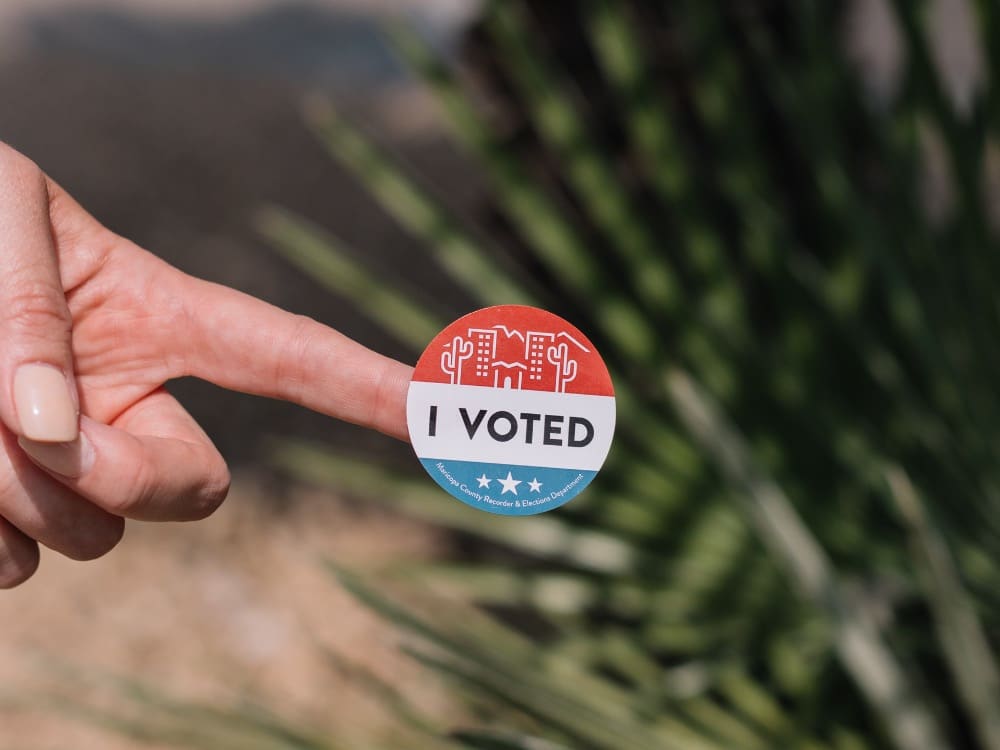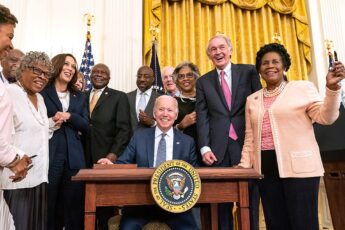Never before have teachers, especially civics teachers, been in such a delicate, but essential, position to be reliable, non-partisan, and unbiased sources on current politics.
The 2016 election left so much polarization in its wake that many teachers, even ones well-versed in current events, struggled with how to maintain professional neutrality. Myself included.
And here we are, arguably in even more urgent times, with healthcare, wealth inequality, judicial appointments, and race and gender issues at even higher stakes. Yet, many teachers now feel hesitant to even address politics much at all because of all this divisiveness.
Sadly, in response to a far-reaching survey, nearly 10,000 school employees reported what the Southern Poverty Law Center called the “Trump effect.” These increased incidents of hate speech and steadily decreasing levels of respect across American classrooms immediately followed one of our country’s most contentious presidential campaign seasons to date. In spite of this increasing polarization, the NEA described a post-2016 election survey that found teachers also received pressure from administrations and communities to avoid talking about the election and politics all together. Ultimately, though, omission isn’t actually neutrality.
So let’s also be clear, speech by one student that intimidates or violates the rights of another never should be tolerated. Likewise, dismissing the current issues that weigh so heavily on your students that they inevitably spill into the classroom isn’t good either. The Anti-Defamation League gives great tips for handling these situations.
Authors Diana E. Hess and Paula McAvoy also give fantastic advice on how to teach current issues and civil discourse in general in their book, The Political Classroom: Evidence and Ethics in Democratic Education. You can also catch a few of their tips here in this NPR interview.
For this blog post, though, I want to focus specifically on how to teach about voting and elections from a position of genuine neutrality, since skipping or shrinking your election unit is definitely not the solution and it is thankfully still a topic that is solidly in states’ standards. This is because democracy rests on a foundation of free and fair elections and not teaching this cornerstone topic is far more detrimental than the possibility that your own politics might seep into the conversation.
You absolutely should be teaching candidates, party platforms, ballot propositions, and voting laws and they absolutely can be taught while maintaining your own neutrality. I want to share my best tips for doing so.
First, here are my goals when teaching my Voting and Elections unit, regardless of whatever the current partisan discord is. By the end of our unit, I want my students to:
1. Feel empowered to locate and assess diverse, official, and high-quality election materials to independently decide for whom and what they want to vote.
2. Value their right to vote, be familiar with the basics of election procedures, and know how to advocate for themselves to ensure they can and do vote.
There is nothing partisan about either of those two things. In fact, my hope is that I’m lessening political polarization in my students and building open-mindedness and independent critical thinking. Here’s how I do it.
Brainstorm Incoming Political Awareness
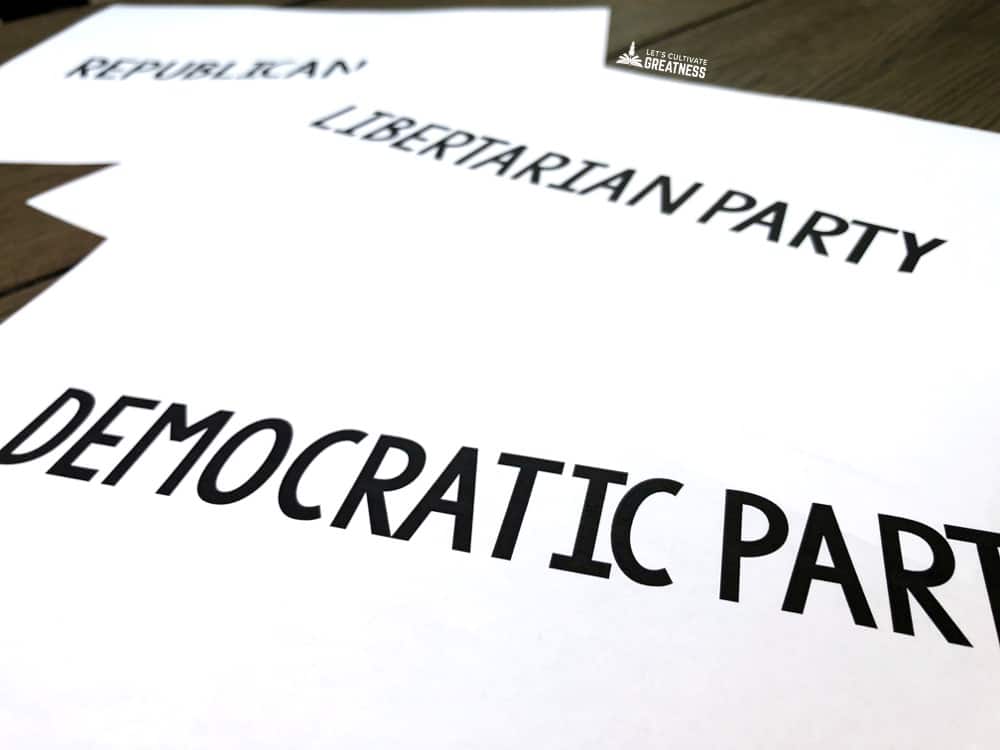
I like doing this activity to kick off our coverage of political party platforms with five large sheets of paper with different party names on each: Democrat Party, Republican Party, and a few third parties. I give small groups a few minutes with each paper to jot down what they know before rotating to the next.
Notice it’s the party, not people who belong to the party: the Democrat Party, not Democrats, the people. The distinction is subtle, but very important.
By keeping the focus on the parties, rather than members of the party it lessens the “they” that feeds into polarization. You are asking students what they know about what the party has decided are their positions, which can be verified by consulting their written platforms online.
You get the chance to not only pre-assess students’ incoming knowledge, but also their attitudes and misunderstandings that will still trickle in through their answers. This insight is useful in setting the tone for the unit. If students seem to generally lean one way, I will know to raise the other side more. If there seems to be more mixed political attitudes, I will know to celebrate this strength.
This also creates the teachable moment to splice the differences between the facts of the parties’ positions and the personal beliefs people have about the people who belong to the party. This will come down to word choices: “You may describe members of the party as… but the party would say they believe…”
This exercise teaches that parties take different positions, people have the choice to associate or not with those parties, and that not every person associated with a particular party holds the exact same beliefs, giving the glimmer that each candidate deserves their own examination and should not be decided on solely because of the letter after their name.
Start with Your Voter’s Guide
Assuming you are teaching your unit leading up to Election Day, you definitely want to access your elections office’s resources.
Each fall, I connect with my county’s election office and request a box of printed copies of voter guides so each of my students can thumb through and mark up the text. Putting tangible copies in my students’ hands makes a big difference in inviting them into the voting process.
Unfortunately, states’ official voter guides aren’t created equal. Ballotpedia breaks down their features, including print accessibility, and rates them. Only 12 states received a Very Good or Excellent rating in 2019. Regardless, start here with this and show students how to maximize what is provided.
Voter guides are often the best first place to go to learn about ballot propositions and candidates, especially ones without the name recognition.
They also usually provide details about registration deadlines and requirements and duties of various offices up for election. Providing some space for students to think and talk about these rules, especially if any are recent changes, is important in helping students value their right to vote and know how to vote.
Consult Political Parties’ Platforms
I give step-by-step details in another blog post of my favorite way to teach about political parties, so I will only briefly explain it here. Political party quizzes can be problematic by implying a person should be affiliated with a political party, reinforcing an either/or paradigm, and often aren’t written in student-friendly language or solidly neutral themselves. Instead, I have students examine official party platforms to decide which ones they tend to agree with and on which issues.
This makes the learning student-centered and inquiry-driven. And it takes any bias, intentional or not, out of the lesson because neither you nor an outside source are describing the parties’ positions. Students read and interpret the original sources entirely for themselves.
I have students examine one of five different party platform preambles then share out so we can compare the party’s introductions. Then, students each research one issue (say, health care or immigration) across all the parties’ platforms. Students display their findings in a gallery walk. Again, this takes out the either/or, all-or-nothing sentiment that exists in American politics because the issues stay the focus, not party affiliation.
Your role throughout is simply to help students accurately comprehend and relay what the parties are saying. This reinforces students’ own empowerment to find political information for themselves rather than consuming what others tell them. And, they likely will realize they can agree (and disagree) with statements from multiple parties.
Pull Sources from Different Newspapers
Even in states with excellent voter guides, the space each candidate receives is tiny. To fully research a candidate on the ballot, you need to show your students where else to obtain quality information. After the voter guide, students should next consult official campaign websites, and endorsements from multiple news organizations.
Yup, I think it’s very important students are taught to consult newspaper endorsements and news articles as one component in their research, which is why they’re included when we research candidates and ballot propositions. The strength of our free press that some people make it their full-time job to research and carefully consider each candidate and proposition and share it with the rest of us. That said, students should be accessing multiple news organizations and understanding that endorsements are just one of many factors to consider in voting.
In my state of Washington, in which one part is more liberal and the other is more conservative, I deliberately pull editorials and articles from both sides of the Cascades. The hope is that this modeling will encourage students to continue this habit as adults.
And you know what? It’s really eye-opening to see the word choices when two sources are side by side. One year, we were reading two news articles about a ballot proposition and one was so clearly biased, whereas the other was much more neutral, that it caused some students to devalue the credibility of the first paper as a whole.
Again, if you provide students with a collection of diverse sources from well-established news organizations, you are empowering them to know how to be educated voters. Your role is then modeling what balanced research looks like and assisting them in understanding these sources.
Watch the Debates with a Plan
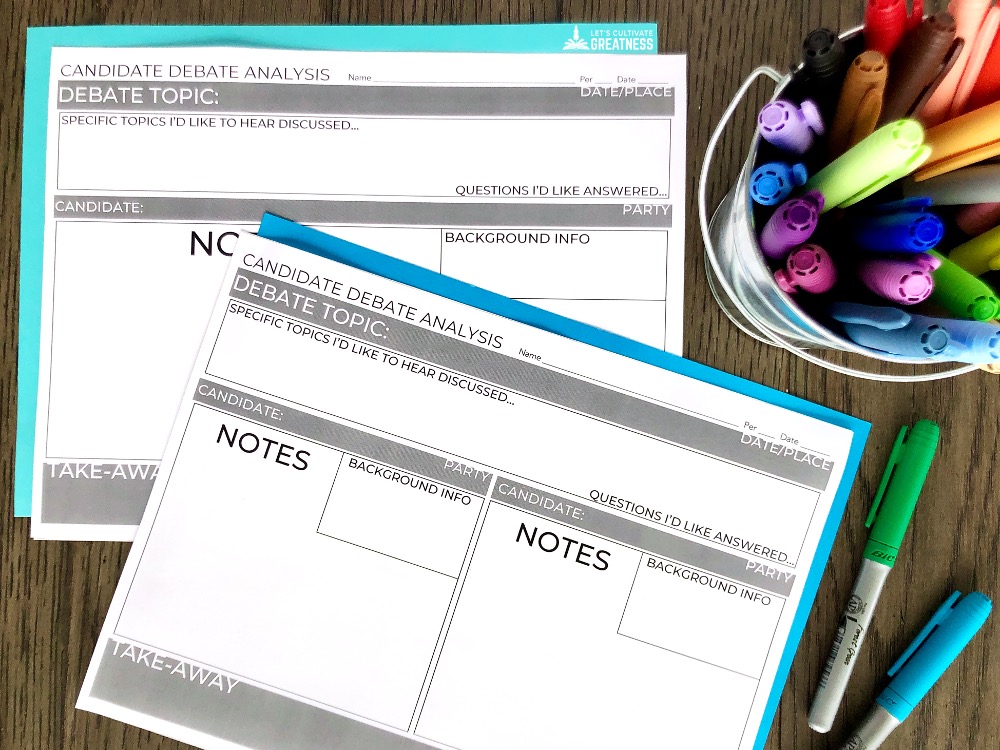
Debates are a great way to give access to the election in a structured way, but plan to only show 30 to 45 minutes of a debate—that seems to be the attention limit for most students. This means, you’ll want to focus on only certain complete segments (as opposed to sound bites) to compare candidates fairly, like the introductions or final words, or two or three segments that focus on specific issues.
I use a simple Debate Analysis graphic organizer for notetaking, which you can grab free in my store. I like this form because it builds a complete experience of watching a debate by including background information on candidates, anticipation for what students hope to hear, and time to reflect on how well what the candidates said matched with what they had hoped to hear. Just turning on the debate without that larger structure can leave students lost and unable to focus on their goal to be open-minded, but also critical of both candidates.
Research Your State’s Voting Regulations
While it is unfortunate that access to voting has been and remains fodder for partisan debate, you should feel confident that teaching your students about how to register, check on their registration, and perform the task of voting is thoroughly non-partisan.
While researching and discussing the balance of ensuring secure elections with voter turnout and voter suppression concerns would be ideal, if time constraints are your unavoidable reality then students at least need to know the voting and registration processes that exist in your state.
I do this by posting a series of real-life need-to-know questions and task students to find the answers. Questions like:
When is the last day to register to vote before this next election?
What do I need to bring with me to vote in-person? What types of photo ID count, if I need one?
Where do I go to vote in-person?
How can I request a mail-in or absentee ballot? When’s the deadline?
When do the polls open? When do they close?
When can I ask to use a provisional ballot?
I point them to our voter guides, my state’s and county’s election websites, and Ballotpedia (just search for your state), which is highly regarded as a neutral source with up-to-date, factual election information.
Afterwards, I have students research and compare different voting methods for their strengths and weaknesses. If students are passionately opinionated from what they’ve learned, I encourage them to write an op-ed or letter to the editor. Again, the activity puts student-guided research at the center which removes me as the source, but more importantly shows students how to seek answers and advocate for themselves.
Because teaching a student-centered, inquiry-based format will help you instill civic engagement while still confidently maintaining your professional neutrality, I encourage you to check out my complete Voting &Election PBL Unit which includes the activities mentioned here, plus many more!
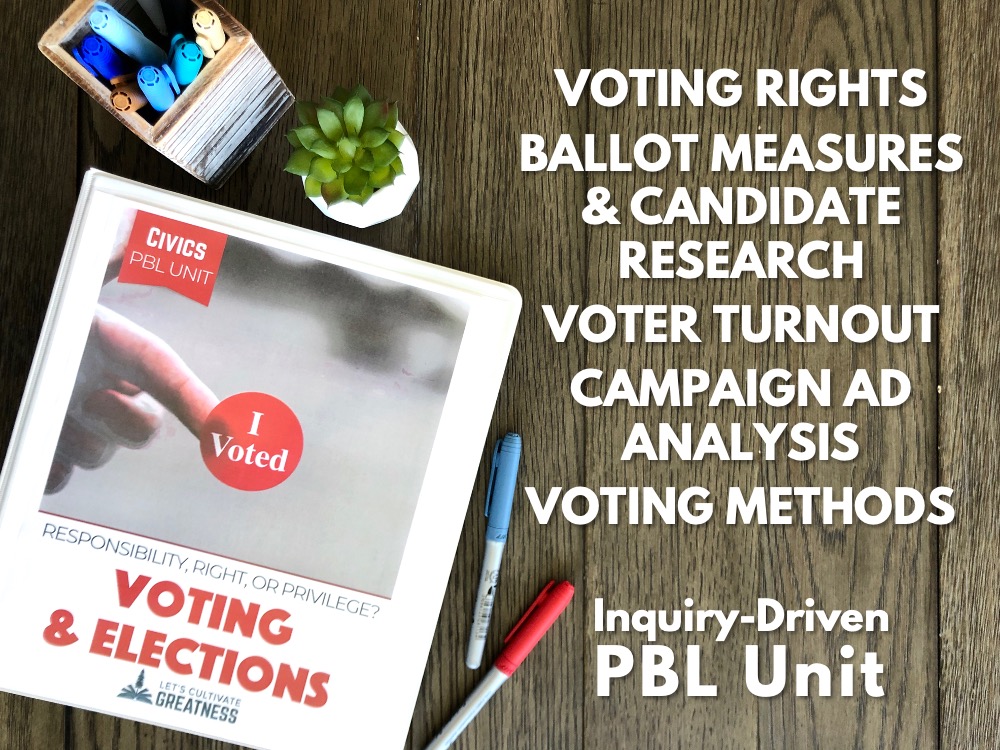
Feature image photo credit: Phillip Goldsberry


